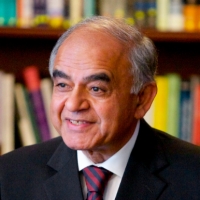India’s Winter of Discontent
India’s improvement in The Ease of Doing Business index is the first tangible proof of Modi’s election promise of “maximum governance, minimum government.”
December 3, 2017
In this winter of Indian discontent—as we try to cope with a toxic smog enveloping the northwest, declining growth, job losses and a cumbersome tax reform — there is finally some good news that should lift our spirits.
India has risen thirty points in the World Bank’s global ranking in “The Ease of Doing Business” index (EoDB). More significantly, it has improved its score on all ten criteria.
No other country has achieved this. Reading this report gives tangible grounds to believe that attitudes of the lower rungs of India’s bureaucracy may have finally begun to change.
A bottom-up success
India is a bottom-up success and stands in contrast to China which is a top-down success. The Chinese state has built the most amazing infrastructure at breakneck pace and converted China into a middle-class nation within a generation.
India’s story is one of private success and public failure. India’s rise is due to its enterprising people. Red tape and an obstructive bureaucracy break the spirit of small enterprises that create the most jobs.
The World Bank has been pointing this out for the past 15 years, but every Indian government till now had ignored the Ease of Doing Business results, preferring instead to pick holes in the index’s methodology.
The World Bank pointed out this week that this is the first Indian government that has taken EoDB seriously. When Mr. Modi set an ambitious target to reach a rank of 50 from 142, everyone thought it was a pipedream. His goal now appears achievable.
Once the glitches in the GST tax reform and the insolvency law are overcome, India’s ranking should improve further. Two main reasons for success is the gradual shifting toward online interactions of the state-citizen interface and the competitive spirit engendered between states.
The top performers
In India’s 2016 State Assessment, Andhra/Telangana shared first place, followed by Gujarat, Chhattisgarh, Madhya Pradesh. The five worst performers were Delhi, Kerala, Assam, Himachal and Tamil Nadu.
The area where the biggest catch-up has to occur is in the Indian judiciary. India still ranks among the lowest-ranked countries in the world in enforcing contracts.
A market system is based on honoring contracts. If people can renege, business becomes risky. Contract enforcement in China takes less than one-tenth of the time than in India. India currently still lacks district commercial courts manned by judges with commercial training.
Fighting corruption
The Ease of Doing Business index is also a great corruption fighter. Corruption is like malaria–you need to clear the swamps to prevent it.
It is better to prevent corruption than to catch crooks. Not surprisingly, the top ten countries in the Ease of Doing Business index have little or no corruption.
This matters not only to business. It can also improve poor people’s lives. After all, the same administrative process change that reduced the time to issue a construction permit by Delhi’s municipality (MCD) has also resulted in reducing the number of days to get a birth certificate.
Renewing a driver’s license in Delhi now requires half an hour without a pay-off and one receives the new license by post within a few days. This is why Mr. Modi says, “the ease of doing business is the ease of living your life.”
Maximum governance, minimum government
India’s improvement in the Ease of Doing Business index is the first tangible proof of Modi’s election promise of “maximum governance, minimum government.”
In upgrading India’s rating, Moody’s has also underlined that only through institutional reforms will India realize its potential.
At rank 100, India still has a long way to go. Most enterprises are still not aware that their states now offer single window clearances.
Employment-intensive sectors still have to put up with corrupt labor inspectors. Land acquisition is still mired in red tape.
Imagine if more far-sighted Indian governments had implemented the EoDB reforms in 1991! India would be twice as prosperous today, with far less corruption.
The cost of this delay is a tragedy. It also reminds us that India’s socialist era which claimed to deliver growth with social justice, delivered neither.
Only when the Indian economy’s growth rate crosses the 8% threshold and jobs come in droves will the bright days truly arrive. Meanwhile, this is a great step towards that.
Takeaways
India has risen thirty points in the World Bank’s global ranking in “The Ease of Doing Business” index -- improving its score on all ten criteria.
India’s rise in The Ease of Doing Business index is the first tangible proof of Modi’s election promise of “maximum governance, minimum government.”
The Ease of Doing Business index is also a great corruption fighter. Corruption is like malaria--you need to clear the swamps to prevent it.
India is a bottom-up success and stands in contrast to China which is a top-down success.
India still ranks among the lowest-ranked countries in the world in enforcing contracts.
